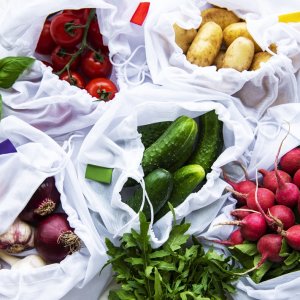Insecurity Affects More Than Just Merchandise

STORY INLINE POST
Q: How will CANAINCA work alongside its members and the government to boost the sector’s performance?
A: We can no longer say there is uncertainty since the government has done what it promised to do. Our greatest concern is the way in which it is implementing its policies. We believe that some programs, such as Jóvenes Construyendo El Futuro (Youngsters Building the Future), are adequate. However, we see a labor shortage in areas like the Bajio region, while in southern states there are no vacancies and more people looking for a job. To generate new jobs, you have to provide incentives for industries to set up operations in these states. This government has a clear view regarding the problems but also a short-term vision. It needs to develop a global view of the problems and design a structured and organized plan to tackle them.
Q: What are the main concerns of CANAINCA’s members regarding their operations in Mexico?
A: We are working along other business organizations to solve certain conditions that are impacting different industries. Some of the pressing concerns we have are related to tax issues. The government eliminated the universal compensation scheme, which is impacting mainly the exports, medicine and foodstuffs sectors and collaterally, the mining industry. This has cut off the industry’s monetary influx. This is a topic that worries us a great deal and on which we work daily with CONCAMIN’s fiscal commission, of which we are members, SAT and SHCP. The other key issue is security, which impacts all industries. We need to work together with the authorities to provide all the necessary information to try to eradicate insecurity. The government’s fight against illegal activities, such as fuel theft, has led people who were participating in these activities to shift their focus to other verticals of illegality, including truck theft along highways.
Q: What are the costs associated with insecurity in the food preserves industry?
A: In 2018, merchandise theft amounted to MX$400 million (US$20.3 million). However, calculating the total impact on the industry is more complex. Whenever they steal a truck, the first thing that happens is that we lose merchandise. Although insurance might cover the loss, insurance premiums increase when it becomes a constantly recurring situation. At the same time, when merchandise gets stolen, companies cannot deliver the product on time, which generates penalties with clients. Finally, when consumers go to the store and do not find their usual brand, they will easily switch to another brand, which means the original brand loses a customer. Products of good and similar quality become easily interchangeable.
Stolen products will probably be sold in the informal market, which can generate a sanitary risk, as well. All CANAINCA members have complete control and traceability of their products, from the farm to the shelf. However, when the product is stolen, the chain of traceability is broken and companies cannot ensure their product is being managed under the right conditions. Although it is not the company’s fault, in the eyes of the consumer, what made them sick is the product they consumed and the brand is the one responsible.
Theft also involves a social aspect related to taxes that were not paid because the merchandise got stolen. If the corresponding taxes for the MX$400 million (US$20.3 million) that was stolen in 2018 had been paid, the money could have been directed toward public works, security or any number of areas that generate a positive impact on society. All these reasons are what makes communication with the authorities so important to reduce crime rates.
Q: What elements should the country’s industrial policy include to boost the food preserves industry?
A: The main thing is to support the value chain, as well as having a clear understanding that our work as a sector is not just to put peppers in a can and sell them. What we do has important ramifications. For every direct job that our members generate, around five more are created in the agricultural sector, plus other two throughout the entire value chain. In addition, 90 percent of the industry’s inputs are national, which means our industry boosts national consumption.
Q: How is the chamber working to strengthen the commercial relationship between Mexico and other international markets, particularly the Chinese market?
A: The Chinese market is complicated but really interesting because of its large population, which means that even a small sales percentage represents a significant number of consumers. It is a market in which we are working a great deal. We are working to open this and other markets but in reality, the most easily accessible market is the US because of population volume and the border we share. However, we see complications in this market as well and we do not think it is wise to depend entirely on one market.
One of the biggest advantages we have is that Mexico has come into vogue. Mexican food has gained popularity around the world. People are becoming more knowledgeable about what is Mexican and are choosing to eat less “Tex-Mex” food and more food from Oaxaca or other truly Mexican places. As a result, our exports are growing.
Q: As an industry, where do you perceive the biggest growth opportunities for exports?
A: Opportunities lie in the European market. It is a potent economic zone, where people do not mind spending more money on high-quality products.
The Middle East market is more complicated. It is farther from Mexico and is not very populous but has also significant monetary resources, so people do not have a problem spending more money for a Mexican product. The problem is that logistics sometimes are not profitable given the high shipping costs.
South America is another market to conquer. It is interesting because we do not tend to look at South America as a destination for Mexican products. It is true, however, that initially it is more costly for Mexican producers to place their products in the Argentinian market than in the Canadian market.
Q: What are CANAINCA’s priorities for the rest of 2019 and 2020?
A: We want to maintain a quality focus across the food industry. As a sector, we believe that the government will notice that there are certain public policies that will need to be at least softened and this will start to provide stability and help us to achieve the growth we all want.








 By Gabriela Mastache | Senior Journalist and Industry Analyst -
Tue, 03/24/2020 - 15:14
By Gabriela Mastache | Senior Journalist and Industry Analyst -
Tue, 03/24/2020 - 15:14















